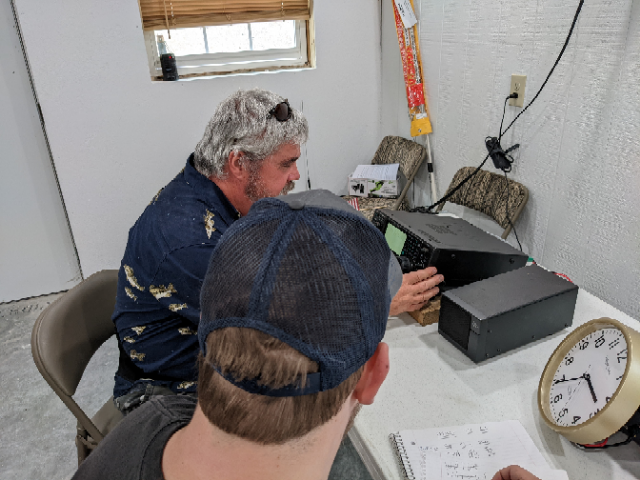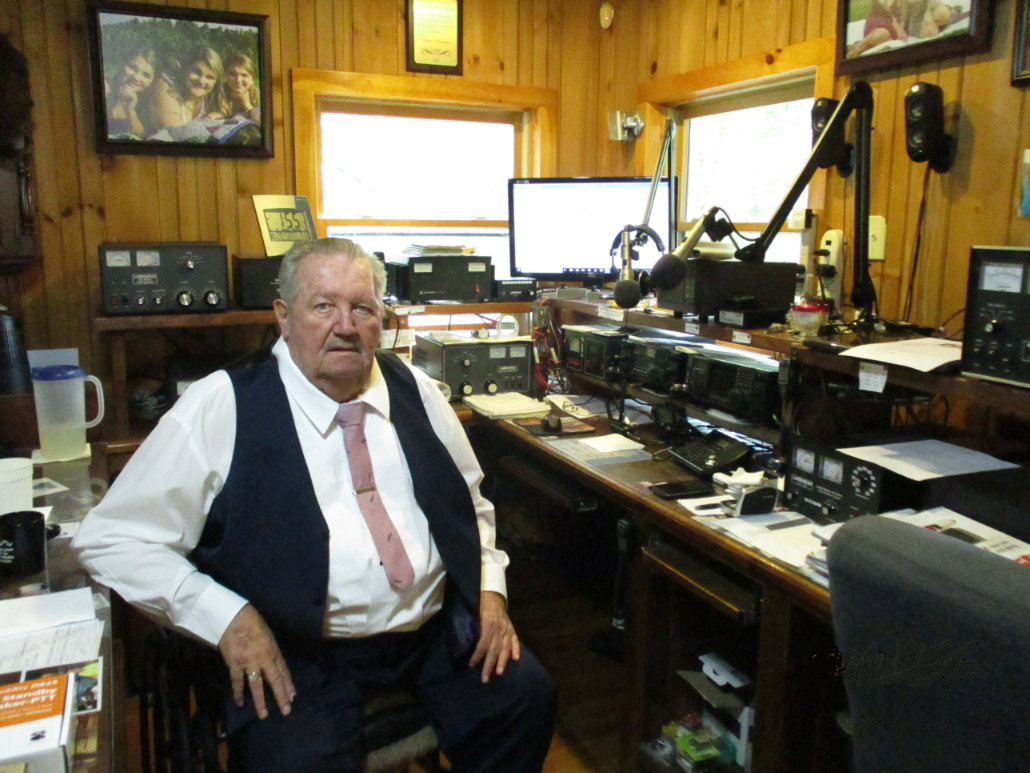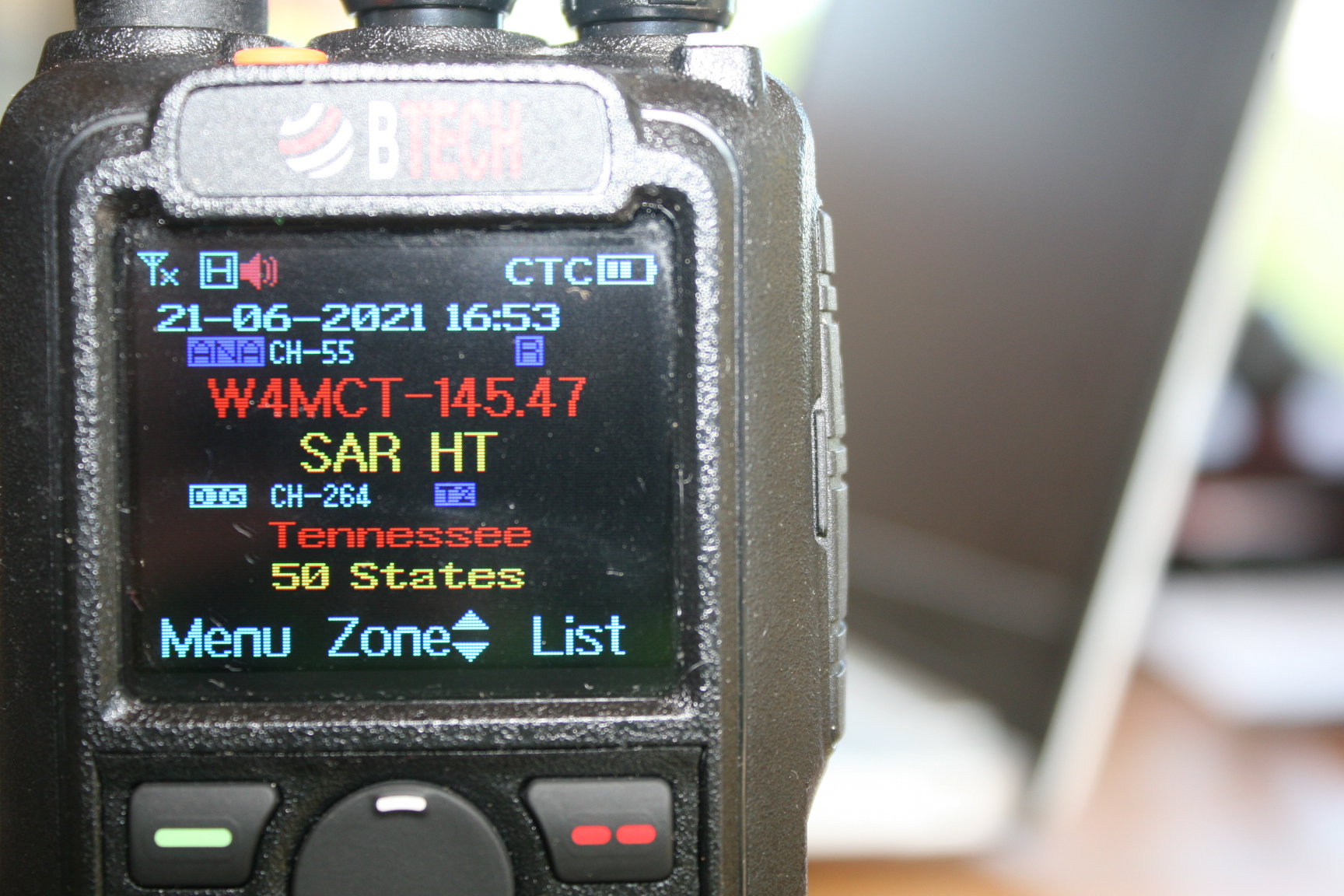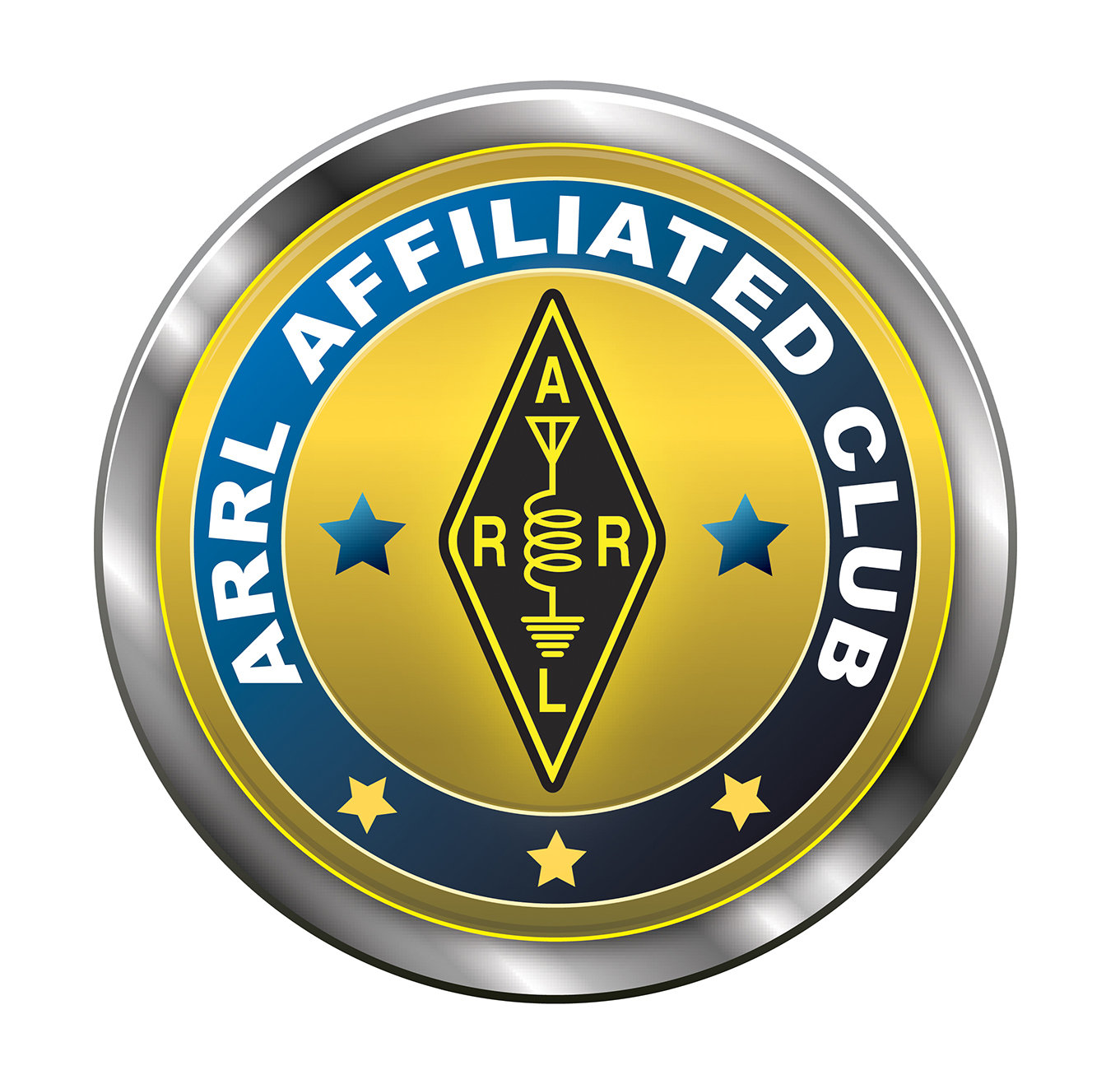Calls fill the airwaves on Amateur Radio Operator's Field Day

The airwaves were filled with calls of "CQ, CQ, CQ!" during the Amateur Radio Operators Field Day activities over a 24-hour period in late June each year. Amateur radio operators from not only North America but from across the globe reached out to contact one another on a day dedicated to preparation and communication.
Amateur, or ham, radio is an activity enjoyed by many people around the world. In the United States, becoming a ham radio operator is open to men, women, and children of all ages. The only requirement is that you pass an exam designed to test your knowledge of basic radio mechanics and Federal Communications Commission (FCC) operating regulations. With radios now available for as little as $35, the world of ham radio is more accessible than ever.
The first step in gaining your amateur radio license is to study the materials covered on the exam. Study guides are available in book form as paperbacks or even available for your digital e-book reader. There are even apps and websites dedicated to helping those interested in amateur radio to review the material. The first exam will be the technician class exam. This test is made up of 35 multiple-choice questions. With the question pool being 300 questions and changing every few years, there is quite a bit of material to cover. Once you are familiar with the information and feel ready to take the test, you can find a local testing site using the ARRL.org website or by contacting your local amateur radio club.
After you pass your exam and the FCC has issued your call sign (the unique series of letters and numbers you will be using during radio operation), you may begin operating on the frequencies allocated to the Technician Class operators. More frequencies are available as you upgrade your license and become more advanced in the study and practice of amateur radio.
At times the mechanics of operating radios, setting up antennas, rules, regulations, and proper radio etiquette can seem overwhelming. This is why it is helpful to become active with your community's local amateur radio club. The local club for the Mountain City area is the Johnson County Amateur Radio Club or W4MCT as they are known on air. The club holds regular meetings the second Tuesday of every month in the Johnson County Rescue/EMS Crewett Building conference room. These meetings are a great place to ask questions and become familiar with all things related to amateur radio. The mentors of ham radio, or Elmers as they are sometimes called, enjoy teaching and advising those who are interested in becoming radio operators.
Field Day is an annual event sanctioned by the Amateur Radio Relay League (AARL) and is the highlight of many ham radio operators' year. With the radio frequencies becoming busy with traffic from points all across the United States as well as beyond, the chance to make contacts in far away locations increases dramatically.
By: Marlana Ward, Freelance Writer The Tomahawk Newspaper
Have Fun and Save the World: HAM Radio in Johnson County

The Johnson County Amateur Radio Club (JCARC) encourages Johnson County residents to learn more about amateur or HAM radio, not just because it's fun but also because it might save your life.
In the late 1970s, a group of amateur radio enthusiasts, HAMs as Karen Weaver, the group's president calls them, formed the JCARC to provide support to one another, as well as to assist new members in getting set up with equipment, and becoming licensed by the FCC. At the same time, most members also joined the Amateur Radio Emergency Service (ARES) and became volunteers for communications duty in the event of a disaster or other emergency.
Danny Herman (pictured above), a noted philanthropist and business leader, was an instrumental member of the club as well. "He was a big factor in the repeater sites in our county," said Weaver. "For over forty years, he encouraged the use of these radios at our homes and in our vehicles. His voice could be heard all over the county and the world."
Like the best hobbies and the best forms of communication, HAM radio is both fun and valuable. On the social side, users can be found chatting on their radios across the state, across the country, and oceans. You may even find them listening in on conversations at the International Space Station.
Getting to know people, forming friendships, learning about other nations, customs, and even other languages in just the beginning. Johnson County club members perform duties as weather spotters for the National Weather Service, and when disaster strikes, they coordinate with Ballad Health and the Johnson County Health Department to keep communications open and flowing when electricity and phone lines are down. JCARC members who are ARES volunteers might also be deployed to a location that requires immediate communication.
"It will work when all else has failed in communications," Weaver said of the unique role HAM radio plays in emergencies. "The radios will keep on talking."
A simple hand-held radio can get you started, or you can go all in and all around the world with an amplified antenna connected to a desktop radio. JCARC members are ready with advice on all of this, according to Weaver, who said, "Talk to a HAM and catch the bug."
Making it even more accesible is a recent accomplishment of JCARC, which is the fine-tuning of a new repeater on top of Stone Mountain for General Mobile Radio Service. GMRS accomodates shorter distance two-way communication and utilizes one license, which can be shared with all license holder's immediate family members.
JCARC meets on the second Tuesday of every month at 7 p.m. Contact information can be found on the group's website at W4MCT.com .
By: Dan Cullinane, Freelance Writer The Tomahawk Newspaper


